Features of polyurethane floor primer
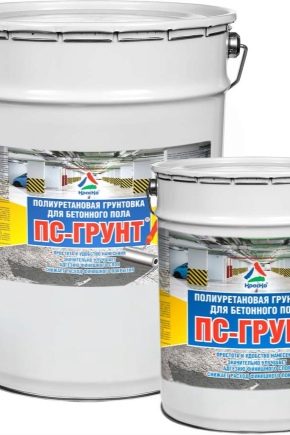
Concrete, despite its high mechanical hardness and density, is a porous material. The presence of such a structure leads to the absorption of moisture from the environment. The increased absorbency of concrete substrates that have not undergone additional treatment with a concrete primer leads to overspending of paintwork materials in the process of finishing work on them.
For this reason, the surface of the concrete floor is covered with a layer of primer. It is a special compound with the ability to penetrate deeply into the concrete base. By filling the micropores of such a floor, the primer helps to strengthen the concrete surfaces, while enhancing their adhesive ability.
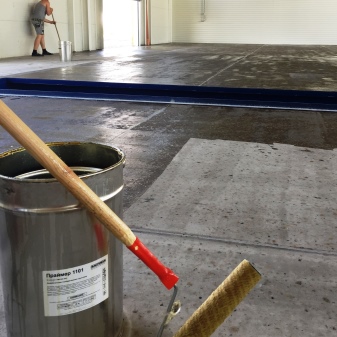
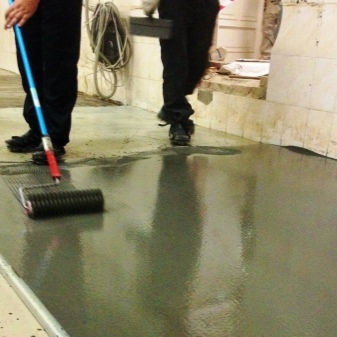
Types of primer coatings
The modern market offers consumers a wide range of ground coatings. All these finishing materials must have the necessary adhesion to the concrete surface and the ability to improve its structure.
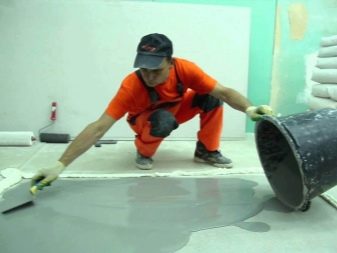
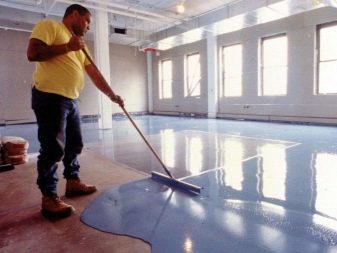
All primers and their zinc-rich variety, in particular, differ in composition and purpose.
The composition is distinguished:
- An adhesive primer that creates a roughened topcoat. This feature contributes to better adhesion of finishing building materials with a smooth concrete surface;
- Epoxy designed to resist external factors and capable of filling small pores in concrete, creating an even surface and strengthening it;
- Polyurethane, which has a principle of action similar to epoxy. It is used for priming concrete floors for industrial premises;
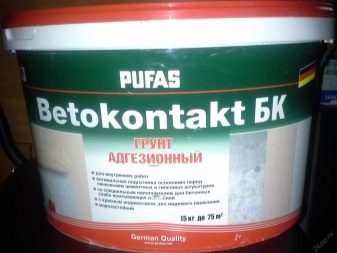
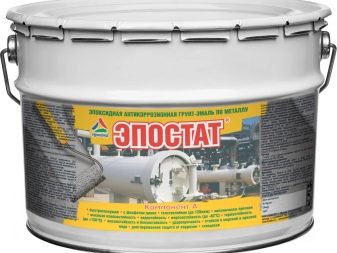
- Acrylic, odorless, environmentally friendly primer and the release of substances harmful to humans. It contains a fungicidal component to prevent fungal mold accumulations. Its structure helps to reduce the consumption of finishing building materials. The undoubted advantage of acrylic primer is its low price. The maximum drying time is 3 hours, which makes it possible to continue repair work soon;
- Silicone for priming the floor in rooms with high humidity;
- Primer brand "Beton-contact". This coating is applied before laying new ceramic tiles or processing drywall sheets.
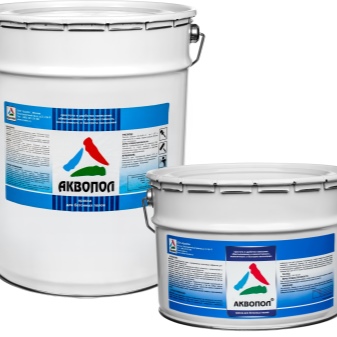
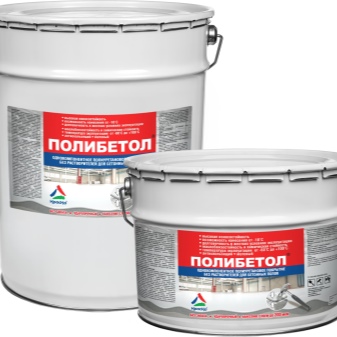
They differ in purpose:
- antiseptic primers that protect against mold and mildew;
- anti-corrosion;
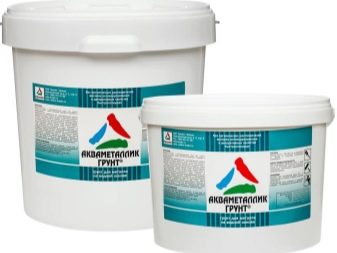

- insulating primer mixtures for protection against aggressive chemical compounds and adverse environmental factors;
- primers to improve the bond between two different materials;
- compositions for priming aerated concrete surfaces.
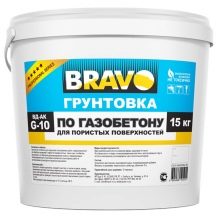
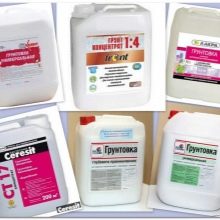
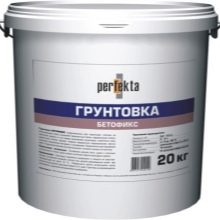
There is also a classification according to the type of surface to be treated, which includes primers for smooth concrete surfaces that will be painted, plastered or waterproofed.

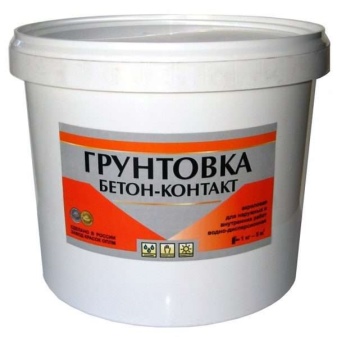
Another variety used for porous concrete surfaces are pore-filling compositions with silicate fillers.
Another type of primer is alkyd, it is designed for working with metal. It is also used for concrete, since in both cases it has a very high level of strength, does not wear off after hardening and can be used in the cold. However, the disadvantage is the long, about 12 hours, drying time.
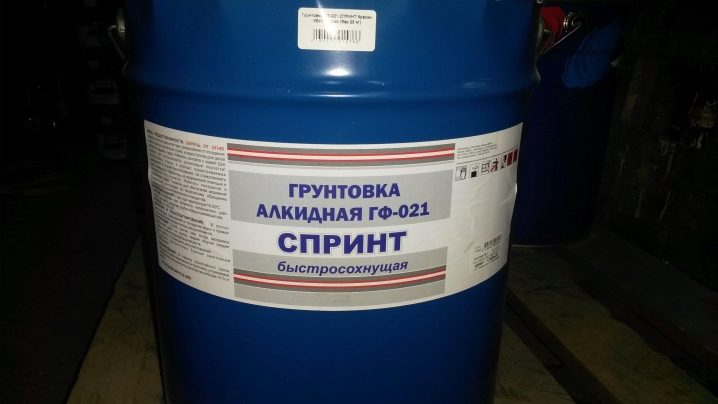
Criterias of choice
A competent choice of soil mixture should provide for the use of such grades, which contain an antiseptic to prevent the appearance of fungi and mold, especially in rooms with high levels of humidity.
For internal concrete foundations of premises, conventional primers are used, and for the outer part of the foundation, mixtures specially developed for facades are the best option.
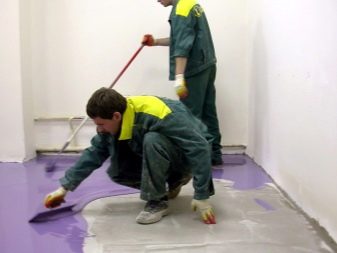

When making a purchase, pay attention to the production time and the integrity of the container. Expired goods, as well as damaged packaging, can lead to the loss of the useful properties of the primer.
Primer application methods
The priming coat is applied in 2 layers with waiting time for each to dry. This work is carried out in compliance with safety rules. Be sure to use a respirator, goggles and gloves. It is important to take into account the required temperature regime, which is indicated on the product packaging.

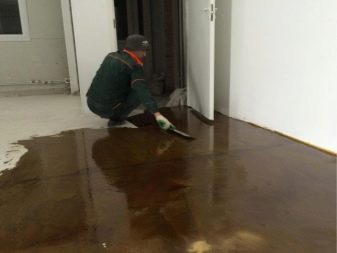
Primers can be sold ready-made or dry for further dilution with water.
In the latter case, the mixture is prepared immediately before carrying out repair work:
- The surface to be treated is cleaned of dust, dirt and grease stains manually or with a grinder.
- The composition is applied with a brush, roller or spray gun.
- The application of primer to concrete is carried out in one or two layers, as indicated in the instructions for this brand of mixture.
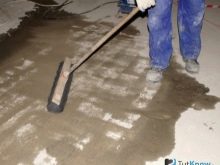
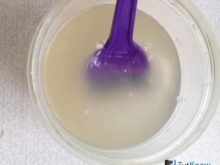
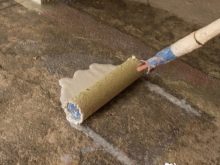
General recommendations
- Before buying a building material, you should consider the scope of its application, for what kind of work (external or internal) it will be used.
- It is necessary to pay attention to the quality of the surface to be treated, its service life, the presence of pores in it, what kind of finishing will be used on this concrete floor.
- It is necessary to determine the level of sunlight, the state of humidity and other environmental factors. After that, the material consumption is calculated per unit area of the treated surface, that is, per square meter.
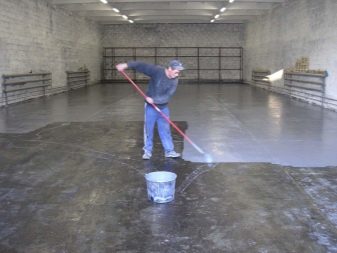
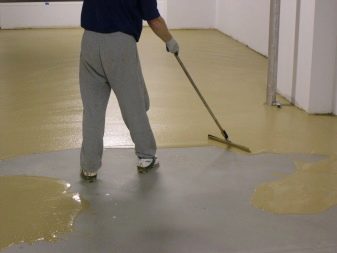
Benefits of using primer composites for concrete
Taking into account all the properties of primer coatings for concrete substrates and recommendations for their selection, you can get the most even surface. Concrete begins to interact better with any finishing material. The service life of a floor treated with a primer mixture is significantly increased by imparting improved adhesion properties to its surface.
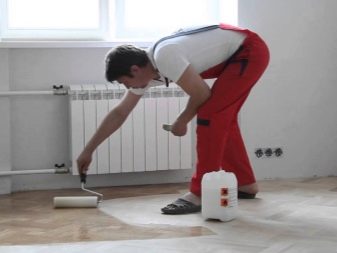
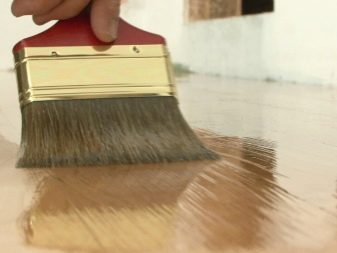
The finishing material adheres more firmly to concrete, which helps to prevent the development of delamination from it, cracks and subsequent destruction.
The concrete floor surface itself is significantly hardened after such treatment, while without it, a small layer of concrete under the decorative coating can quickly collapse. Treatment of a concrete base with an appropriate primer composition greatly contributes to its protection against aggressive chemical compounds, which, together with dampness, can penetrate even under the putty layer.
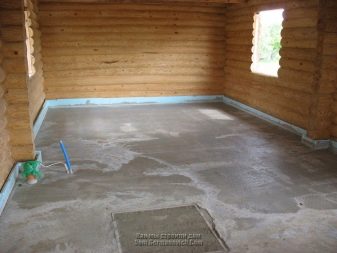

The primer reliably closes micropores in the concrete layer, thereby helping to reduce the consumption of finishing materials. This method of processing preserves the natural level of moisture, since non-primed surfaces are always either overdried or, on the contrary, excessively moistened.
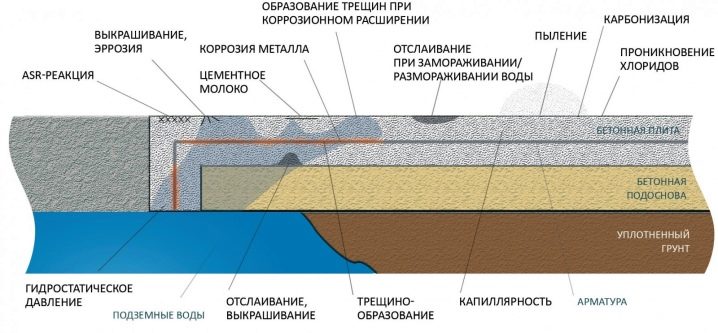
The latter circumstance negatively affects both the quality of the finish and its durability.
See below for how to prime the floor.













The comment was sent successfully.